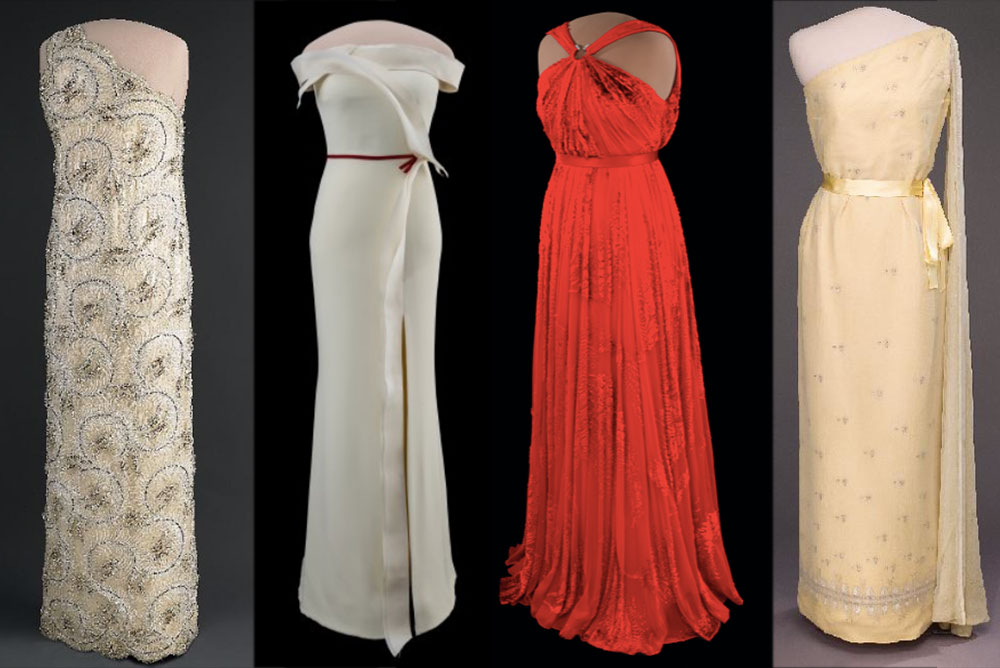
I HAVE IT on good authority that Vice President-Elect Kamala Harris and the new First Lady, Jill Biden, will be wearing . . . something . . . when the (Joe) Biden-Harris administration is sworn in on Wednesday, January 20, 2021.
[The Biden transition team announced Wednesday morning that Joe Biden will be clothed by Ralph Lauren for the swearing-in ceremony. Dr. Jill will wear a wool tweed dress and coat by young “emerging” designer Alexandra O’Neill of Markarian, her own three-year-old label, which to date has trended toward the glitzy. Both first couple outfits will be blue. And now we’ve seen, Vice-president Kamala Harris was also in blue, albeit a more vibrant shade.]
But with official Inaugural balls canceled (thank you, coronavirus), the afternoon ceremony will probably be our only opportunity to quench our fashion cravings (color-coodinated masks really don’t go very far in that regard).
With that need in mind, I thought it was a good moment to root around in the First Ladies section of the Smithsonian’s National Museum of American History website.
The idea of displaying Inaugural and other garb seems like a no-brainer now, but the Smithsonian was born in 1846 and it wasn’t until 1912 that Washington society leader Cassie Mason Myers Julian-James offered to establish a collection of historic costumes for the museum. In collaboration with Rose Gouverneur Hoes, a descendant of President James Monroe, Julian-James developed the idea for an exhibition of women’s clothing that featured the “costumes of the ladies of the White House.” By 1914, the volunteer curators had assembled a collection of 15 gowns contributed by the friends and families of former first ladies.
According to the Smithsonian website, the original “Collection of Period Costumes” exhibition included dresses worn by the wives of the presidents and the female relatives who sometimes served as the White House hostesses. It was the first Smithsonian collection focused on women and the first exhibition to feature them prominently. It paved the way for future collections and exhibitions about American women.
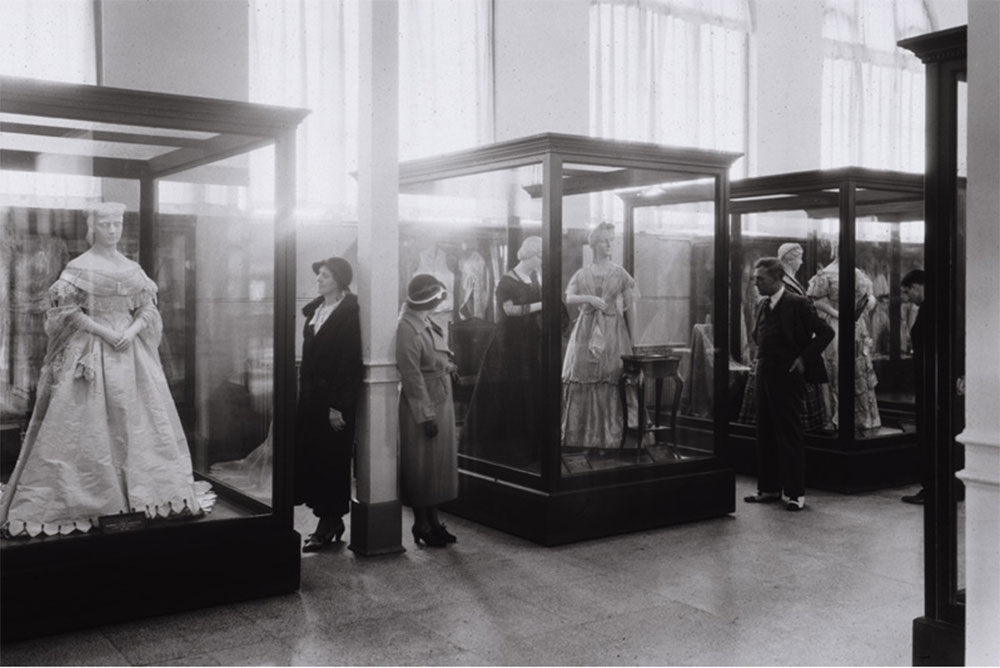
I must confess that I loved when museums looked like this, slightly stodgy, maybe a little dusty, kinda mysterious. This image is of the “Collection of Period Costumes” exhibition, around 1930. (Also love the cloche hats on the visitors and the two-tone shoes on the gentleman on the right.) / Photo from the Smithsonian’s National Museum of American History.
It has become customary, since the 1912 donation by First Lady Helen Taft, for the First Lady to donate to the Smithsonian her gown from her husband’s (so far!) administration’s first Inaugural ball. The second Inaugural gown has often been reserved for exhibit at the president’s library. The red chiffon gown worn by Michelle Obama (see at top and here) was lent to the Smithsonian for a year, in 2014, and will find its final resting place in President Obama’s presidential center, planned for Chicago.
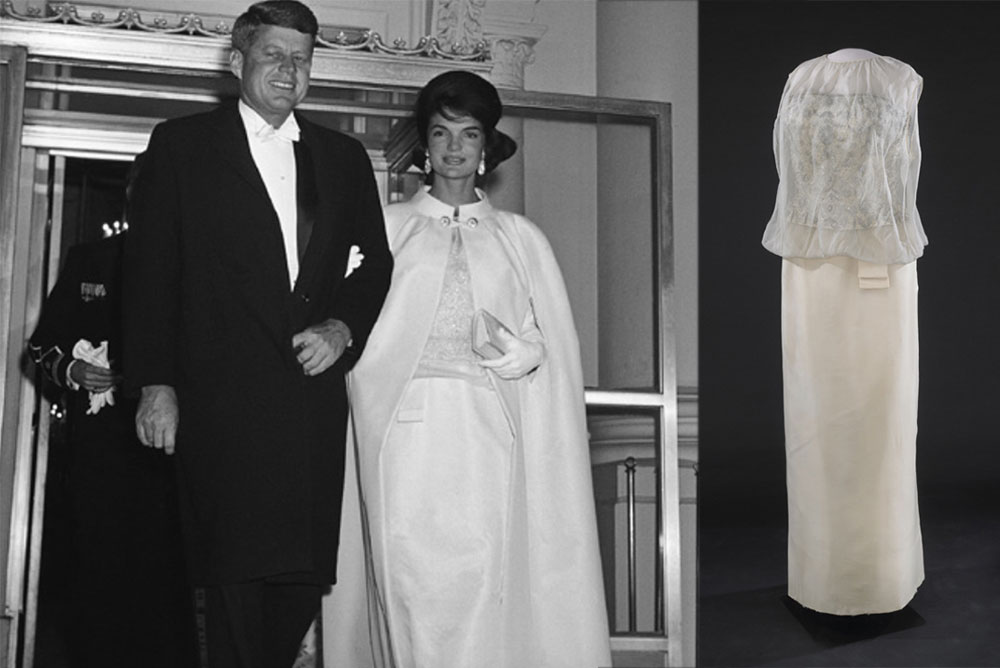
A glowing John F. Kennedy leads First Lady Jacqueline Bouvier Kennedy to his administration’s Inaugural ball. Jackie’s glamorous cape cloaked the chemise-style gown shown at right. The dress was made by the custom department of New York’s Bergdorf Goodman. / Associated Press photo, left, from the Smithsonian’s National Museum of American History. Gown photo from the National Museum of American History.
The museum’s online presence has many iterations of its First Ladies presentation, so prepare to poke around and perhaps leave bread crumbs so that when you come upon a page that announces “This exhibition is no longer on view,” you can still explore what was and then find your way back to where you thought you were going. The detours are their own reward: Images of old exhibits show how pieces have moved around in time; a timeline of White House women that includes, for instance, Thomas Jefferson’s daughter, Martha Jefferson Randolph; and early preserved gowns such as Dolley Madison’s, hand-embroidered with flowers, butterflies, dragonflies and phoenixes.
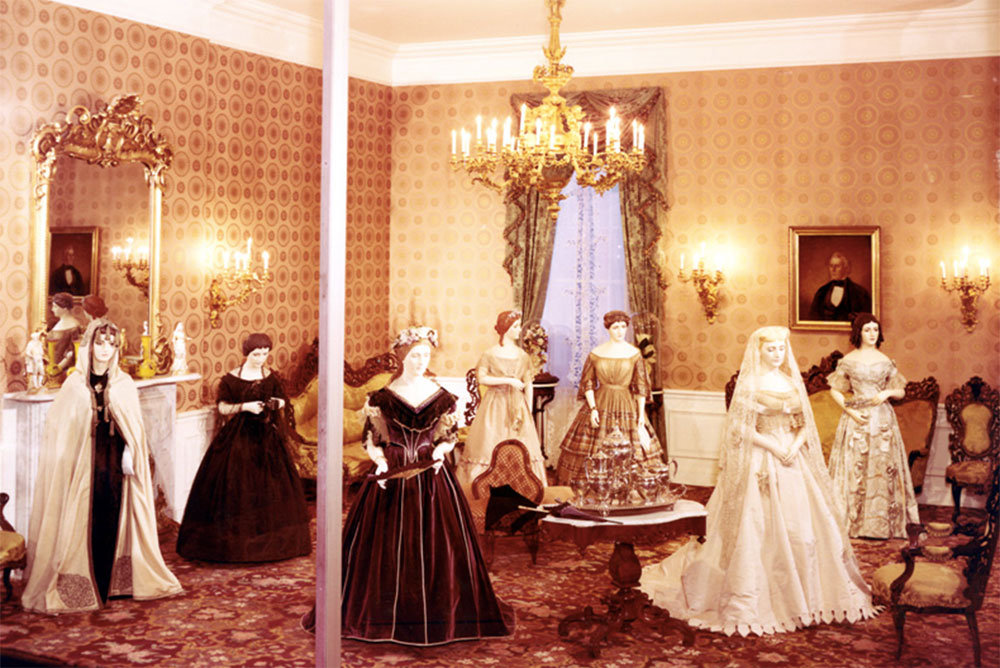
This Victorian Parlor arrangement was part of the First Ladies exhibit, shown in around 1970. / Photo from the Smithsonian’s National Museum of American History.
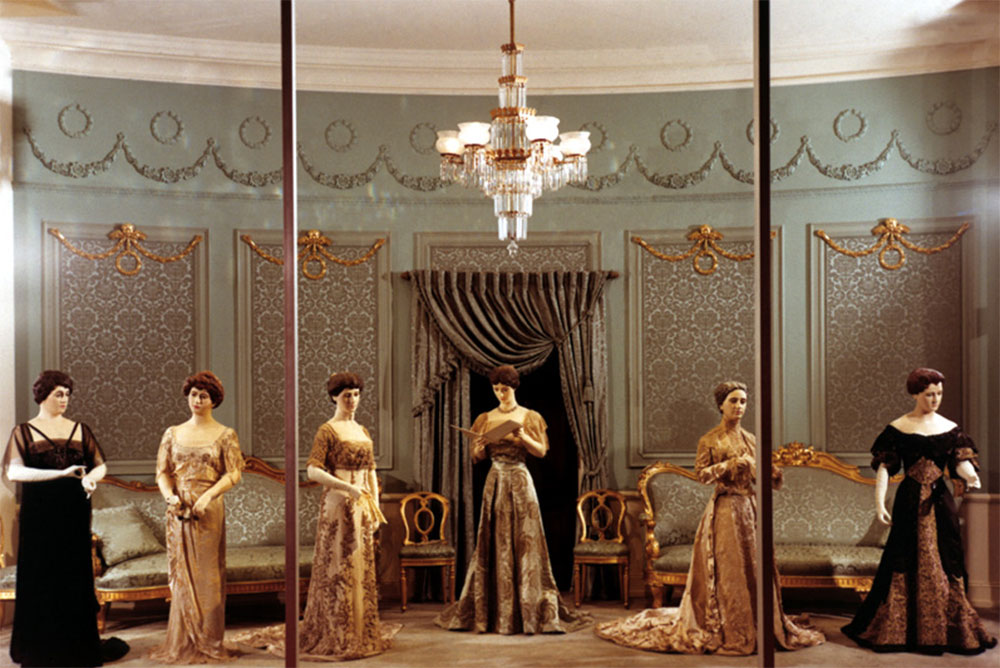
A circa-1970 Smithsonian installation evokes the Blue Room at the White House. / Photo from the Smithsonian’s National Museum of American History.
The images here show mostly fairly modest, staid day dresses (18th- and 19th-century) and gowns, but you can also view such confections as Grace Coolidge’s flapper-style evening dress and Florence Harding’s rather exotic harem-looking dress (that look was a thing then). There’s more random treasure to be found: Mary Todd Lincoln’s enameled gold bracelet-watch, made by V. John Magnin & Guédin, Geneva; Abigail Adams’s embroidered leather slippers; and Eleanor Roosevelt’s—wait for it!—sunglasses.
Like our own wardrobes, these garments have to be rethought, even repaired or rebuilt, especially after hanging, albeit protected, for many years. The opposite of fast fashion, some of the gowns demonstrate the care that once went into dressing: A two-piece silk-satin dress from 1861 owned by Mary Todd Lincoln is exhibited as a day dress with a simple scoop neck. The bodice of the dress is, however, a late-19th-century reimagining: The original gown had a more formal evening bodice; the daytime bodice was fashioned with fabric from the skirt.
Remember when people knew how to sew, or at least knew people who knew how to sew, and conserve, and work with what they had? Such musings might seem to intrude on a historic Inauguration, but while we’re pondering so much else in American life, it might not be such a bad use of a few spare moments.
It’s useful to note that the Smithsonian website is not political. When you notice displays—whether clothing or accessories or White House china—that end in images of Michelle Obama, it is because that particular non-interactive display is taken from before the Trump administration was in place.
There are other surprises. I always thought it was quite remarkable that Jackie Kennedy was able to step so deftly into the role of First Lady at the tender age of 31. Now I discover that Andrew Jackson’s First Lady, his official hostess, was his niece, the 21-year-old Emily Donelson; also 21 was Martin Van Buren’s First Lady, his daughter-in-law Angelica Singleton Van Buren; as was Frances Folsom Cleveland, President Cleveland’s wife. The oldest woman to step into the First Lady role? The current one, Dr. Jill Biden, at age 69.
—Nancy McKeon
